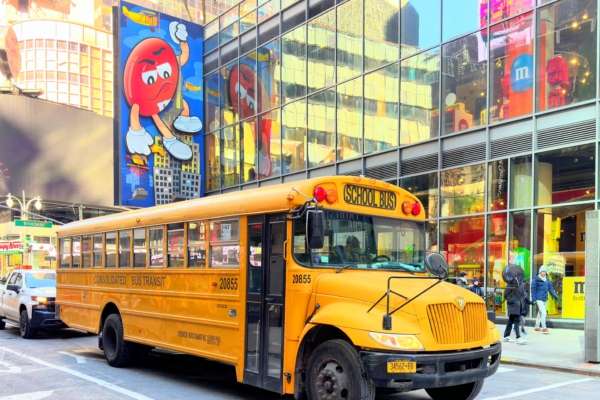According to the latest report released by the New York State Comptroller’s Office, even after the easing of the pandemic, the long-term absentee rate of students in public and charter schools in New York State continues to rise sharply, with an overall long-term absentee rate of 29.1% for public school students in the 2022-23 school year.
State Comptroller Thomas DiNapoli released the latest report on Friday, October 4, revealing a surge in long-term absentee rates among New York State students in the 2022-23 school year. The rate for high school students is 34.1%, which is 7.6 percentage points higher than that of elementary and middle school students.
According to the U.S. Department of Education, any absence that amounts to 10% of total school days (usually 18 days) due to any reason is considered long-term absenteeism. In New York State, absences due to disciplinary or medical reasons are not considered long-term absenteeism.
The report shows that prior to and following the outbreak of the pandemic, the long-term absentee rate in New York State rose from 18.6% in the 2018-19 school year to 24.1% in 2020-2021. Despite the resumption of full in-person teaching in the 2021-22 school year, the long-term absentee rate further increased to 32.6%, a 14-percentage-point increase from the 2018-19 school year.
“Long-term absences can lead to lower student performance, poor standardized test scores, and an increased risk of dropping out,” said DiNapoli.
The report by the State Comptroller’s Office indicates that some major cities in New York State such as Buffalo, Rochester, Syracuse, and Yonkers have the highest long-term absentee rates in public schools and charter schools, reaching 64.2% and 52.1% respectively. The largest increases in long-term absentee rates for these high schools were seen between the 2018-2019 and 2022-2023 school years. The long-term absentee rate for New York City high schools in the 2022-2023 academic year was 43.1%.
Absenteeism is closely tied to housing stability, family income, and race, as revealed in the report. High school students living in temporary housing had a long-term absentee rate exceeding 56%, while low-income community absentee rates exceeded 55%.
Furthermore, there are significant disparities in long-term absentee rates based on racial backgrounds, with Asian students having the lowest rate at 21.3%, followed by white students at 24.7%, Hispanic or Latino students at 43.7%, and Black or African American students having the highest rate at 46.4%.
Moreover, economically disadvantaged students, English language learners, and students with disabilities also had higher rates of absenteeism. In high schools in major cities, these students had a staggering 71.2% absentee rate during the 2022-2023 school year.
In an effort to reduce absenteeism in future school years, the New York State Education Department (NYSED) plans to use attendance rates as a ranking indicator and has launched the “Every Student Present” campaign targeting parents, schools, and communities. The department also recommends that school districts implement various measures, such as expanding breakfast programs to ensure students attend school on time every day, engaging in frequent and proactive communication with parents or guardians, and recognizing good attendance rates.
School districts facing severe absenteeism, such as Buffalo and Syracuse, are making various efforts to restore attendance rates. They have passed the “Every Student Succeeds Act” (ESSA) and are using federal funds from the “Elementary and Secondary School Emergency Relief” (ARP ESSER) provided under the federal rescue package to improve local student attendance rates.
The report emphasizes that long-term missed classroom learning will result in academic setbacks, emphasizing that preventing absenteeism is crucial for making up for the educational loss caused by the pandemic. Addressing this pressing issue requires the collective participation of students, families, and their respective school districts.

